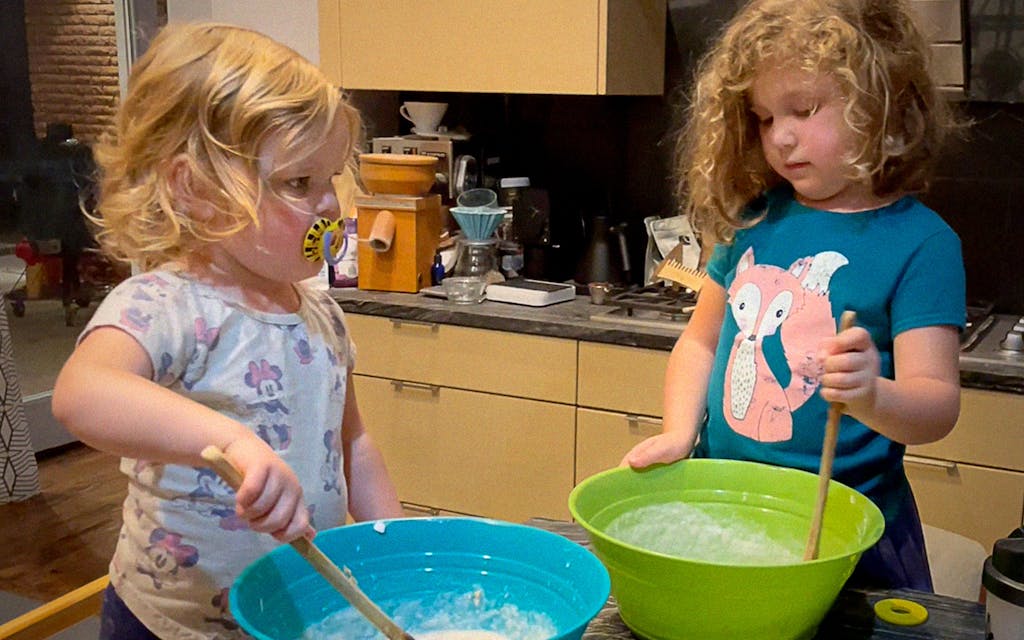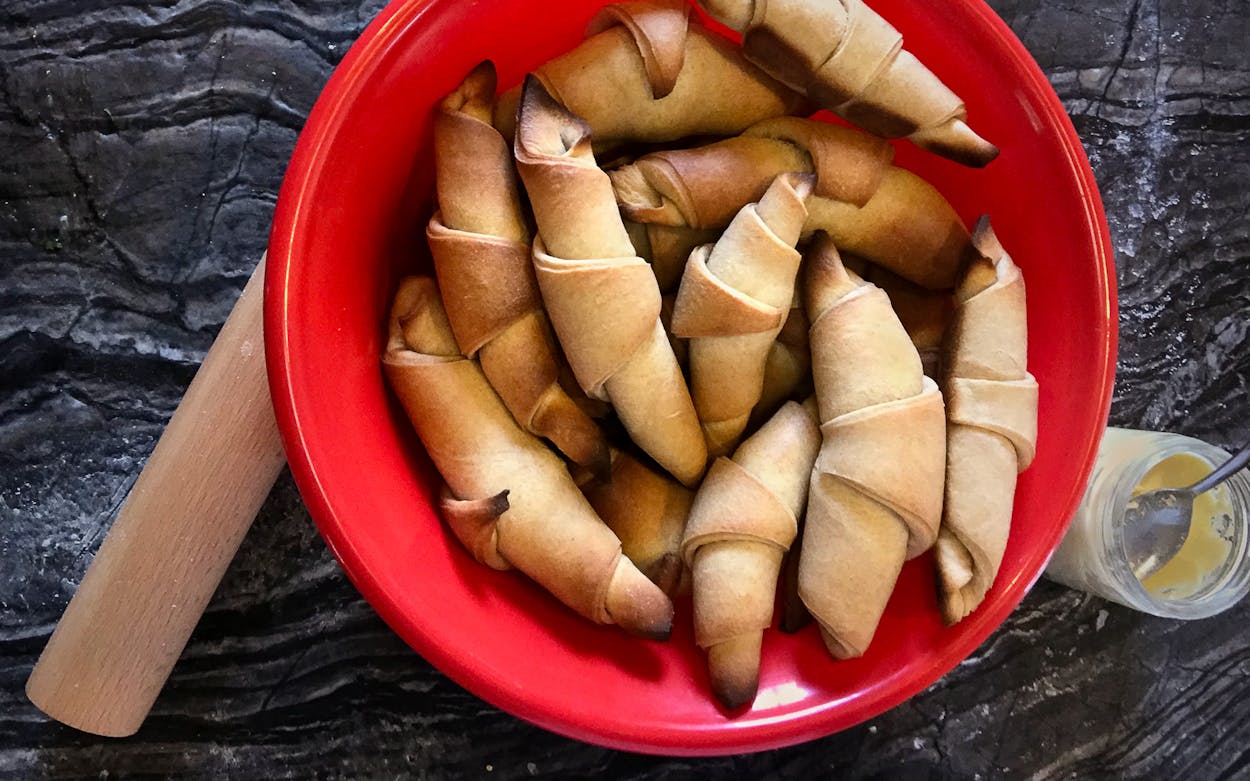My mom always said she got two things out of her marriage: me and a roll recipe. To be deemed in the same echelon as those rolls—buttery, golden-brown horns of yeasted perfection—after she and my father divorced when I was still an infant felt like a great compliment.
The recipe has been passed down on handwritten notes to the sisters and wives on my father’s side going back I don’t know how far, making its way from rural Indiana to Dallas, where my parents settled. The notes would be pulled out anytime something needed to be celebrated; you knew an event was special when the rolls made an appearance, and likewise, their appearance had the power to make any occasion special.
The rolls are in the foreground in some of my earliest and best memories involving that side of the family. I would anxiously wait in the kitchen while my grandmother churned out batch after batch and steal some away to eat on an oversized plush recliner while watching The Price Is Right.
As my relationship with my father steadily degraded over time, these sorts of memories began to belong increasingly to the past, unreplenished with newer ones. I eventually lost contact with anyone from that gene pool in my early teens and reverted to using my mom’s maiden name. Still, this roll recipe, the family tradition, remained.
These days, they’re the star of the Cadwalader holiday spread. But they had to face stiff competition from my grandfather’s (my mom’s dad’s) many dishes, including dressing and giblet gravy. His cooking was the stuff of legend; ask any of the old-timers in the Texas Shriners, and they’ll have a story or two for you about Bill Cadwalader.
He was the owner and short-order cook at Bill’s Snack Bar in downtown Dallas back in the sixties. Family lore holds that he lent his chicken-fried steak recipe to the original owners of Black-eyed Pea, who went on to claim it as their own family’s secret (the epilogue includes the parenthetical that they never made it right anyway). Tales about Granddaddy were always tall, but no matter how far-fetched a story, it was true more often than not.
He was the person I wanted to cook like (still is), the male role model in my life, and the reason I changed my name. His recipes could only be learned through apprenticeship. The amounts of sage and thyme and the ratio of day-old white bread to cornbread in his dressing were decided by feel, not measure, yet were somehow always just right.
The roll recipe, by comparison, seemed staid, conferring information in cups and tablespoons and a criminally scant amount of salt, ready-made for transference from one housewife to the next. Yet, wooden as the steps might be, the results were transcendent. Those old butterhorns overcame home field advantage to be the thing everyone most looked forward to each Thanksgiving.
They inspired my love of bread. My weekly sourdough bakes—my milk breads, focaccias, challahs, baguettes, pizzas, biscuits—can all be traced to “helping” my mom make our annual Thanksgiving batch of rolls at age five. Seven years later, I took over the whole production myself.
In a lot of ways, the rolls mimic my fraught relationship with my father. When I was younger and we still had biweekly visits, it felt like my father’s mother’s recipe. My mom and I were guests, so we politely and reverently followed the recipe to the letter, as though we had borrowed some precious thing and were making sure it was in the exact same condition upon its inevitable return.
As I got older and those rolls became the last vestige of any sort of paternal tie, I began to feel more like an interloper, holding ill-gotten secrets requiring a security clearance I no longer possessed. The feelings of rejection eventually bubbled over into postadolescent outbursts. As the eldest grandchild, the oldest son of the oldest son, I decided in my mid-twenties that this recipe was my birthright, to do with as I pleased. So I did, unthinkably and blasphemously: I changed the recipe.
In the right light, it was me doing what Granddaddy would have done, not standing on ceremony and letting taste be my guide—but from another angle, it was a micro rebellion. Either way, to me, this was a Cadwalader recipe now. And the results were, dare I say, better?

That’s how it stayed for years—until I had kids. With my children approaching the age I was when I started helping my mom bake the rolls, I was forced to reconsider the recipe’s lineage. I could tell my kids that the tradition began 35 years ago in my mom’s kitchen, saving them from a more complicated truth. Convenient though it might be, that version would only serve to protect me, not them, and the story belongs as much to them as it does to me.
In my system-bucking youth, I thought tradition was a lie—some fabricated story meant to impart meaning. But that doesn’t feel like the whole truth anymore. Tradition, to crib an oft-misquoted Andy Warhol quip, is what you make it. We are free to find our own meaning in what is passed down, and we owe that larger generational story no more than what we desire to give it.
I think there is real beauty in traditions, especially the knotty ones. The path can meander and become overgrown; the pace can slow and pick back up again; traditions can invite others to join. The richness comes from the adventure, not the repetition.
That’s evident in my iteration of the roll recipe: a photocopy of Grandma’s words, with notes in my mom’s bubbly cursive, red-lined and appended in my own awful penmanship, crusted with smears and stains from my kids. It will be theirs one day, to make with their children, or so I hope. And they’ll have the full story, some of which they are already starting to put together. For now, though, we have these rolls. We’ll make and eat them together. A moment you could really build a tradition around.
- More About:
- Dallas






